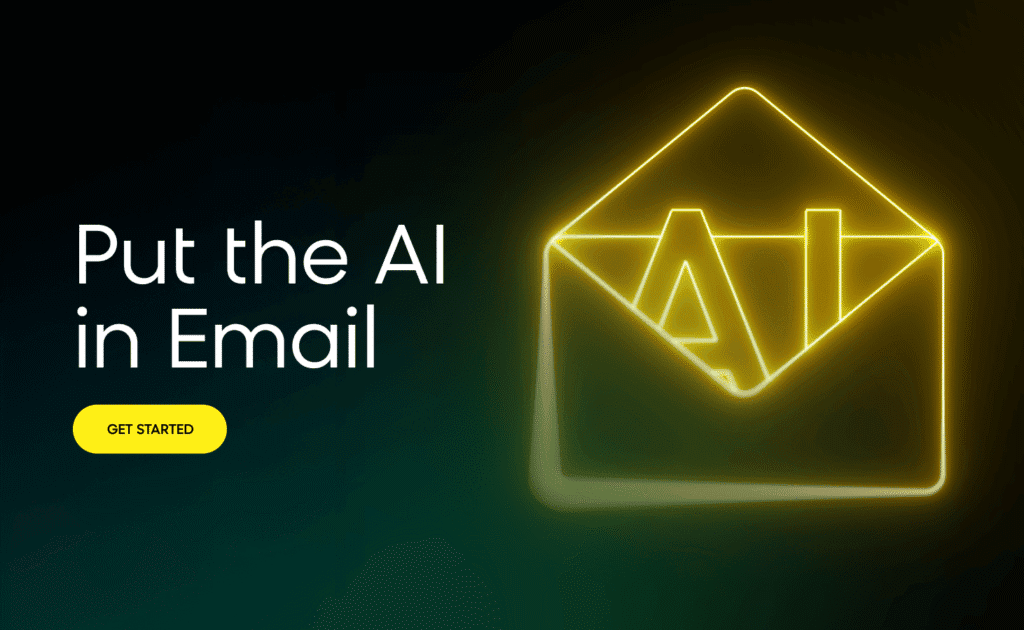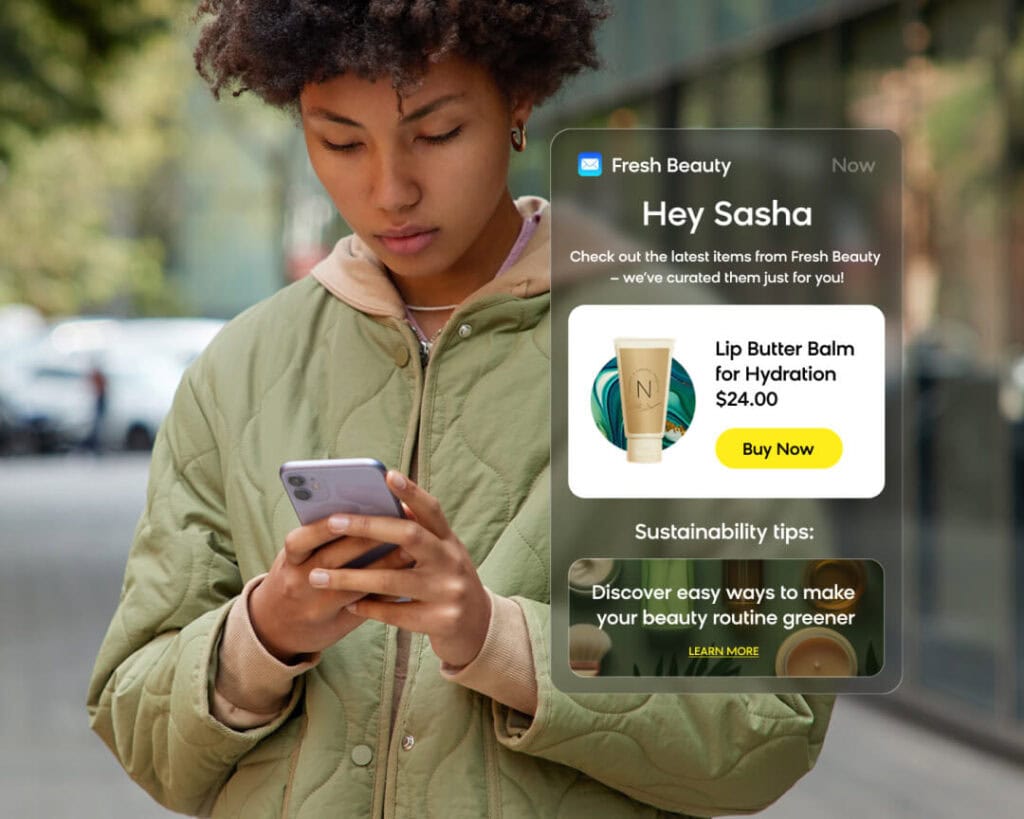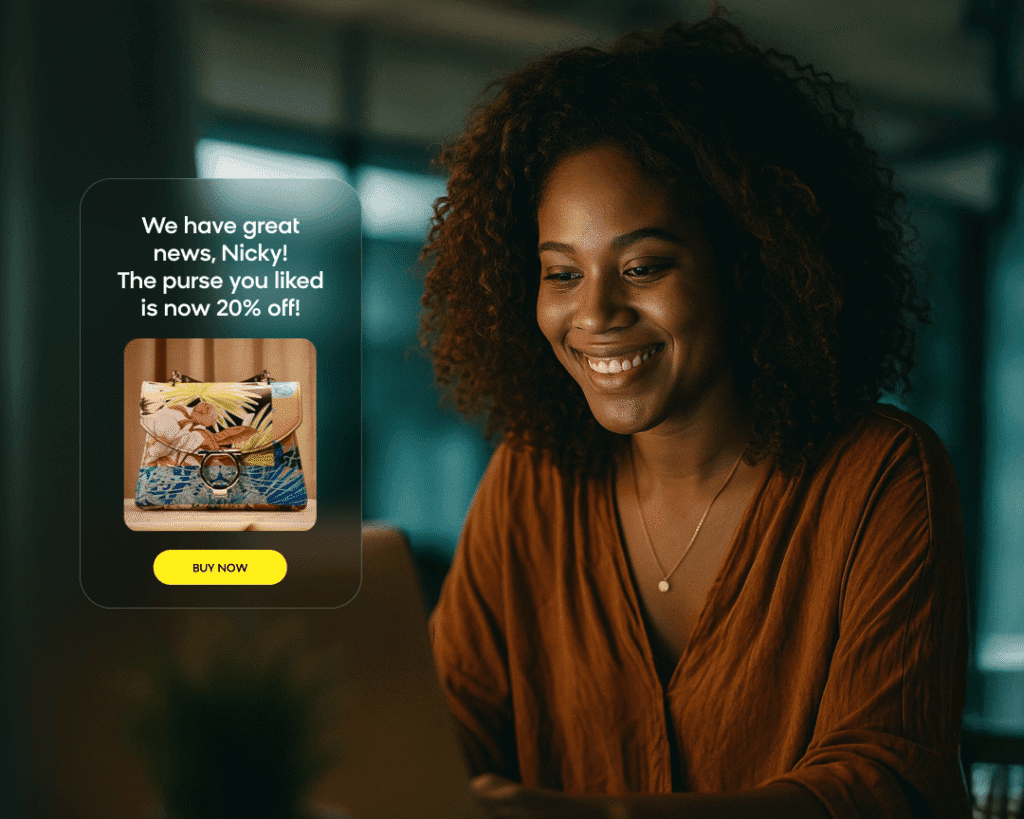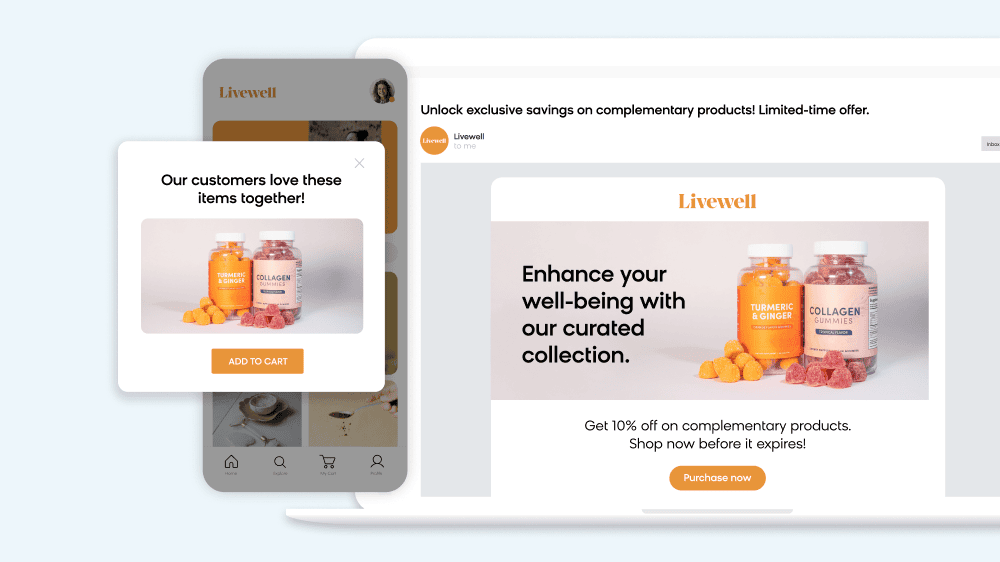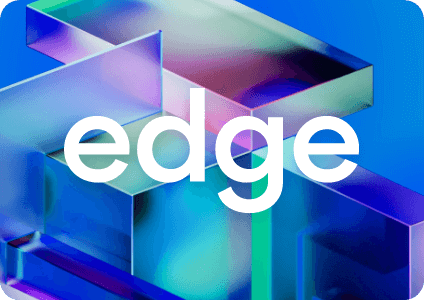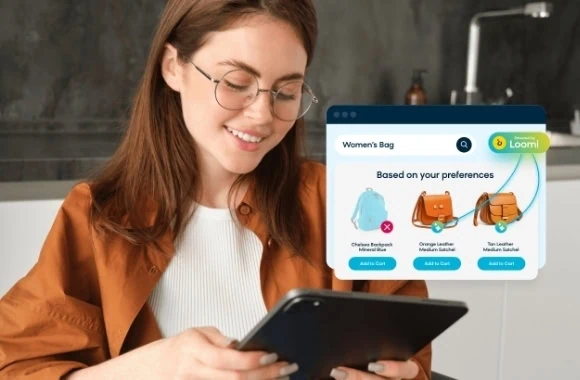Picture walking into your favorite store where the sales associate knows your style, remembers your last purchase, and suggests items based on what you’ve been browsing online. Now imagine scaling that level of personal attention to millions of customers simultaneously.
That’s exactly what today’s consumers want from your email communications, with 71% expecting some level of personalization.
However, even knowing these expectations, most email personalization software still operates on approaches that fail to meet these elevated expectations due to outdated approaches and operational bottlenecks.
The market is shifting toward intelligent, autonomous customer journeys powered by real-time data and artificial intelligence, and if you want to succeed with modern consumers, you’ll need to adapt. Leading enterprises are moving beyond rules-based automation to embrace systems that learn and optimize continuously without constant manual intervention.
Let’s explore how you can evolve your email personalization software to embrace the latest AI innovations and deliver better personalization at scale.
What Email Personalization Actually Means in 2025
Legacy personalization treated customization as an add-on feature — inserting a first name or sending different content based on purchase history. Today’s leading brands treat personalization as the foundational design principle that guides every customer interaction.
The shift reflects a deeper understanding of modern consumer behavior. Your customers don’t live in email-only bubbles. They browse your website, interact on social media, visit physical stores, and engage across multiple touchpoints throughout their day. Your email personalization approach should reflect this omnichannel reality.
Modern consumers expect three core capabilities from personalized email experiences:
• Seamless cross-channel continuity — Email content that reflects interactions across website visits, mobile app usage, and offline touchpoints
• Real-time responsiveness — Dynamic content and timing based on immediate behavioral signals and predictive intelligence
• Adaptive journey evolution — Personalized sequences that modify themselves based on engagement patterns rather than following predetermined paths
The most advanced email personalization software platforms now leverage AI to create dynamic, self-optimizing experiences. These systems respond to shifting customer signals with growing intelligence over time, moving beyond static rules to deliver contextually relevant content automatically.
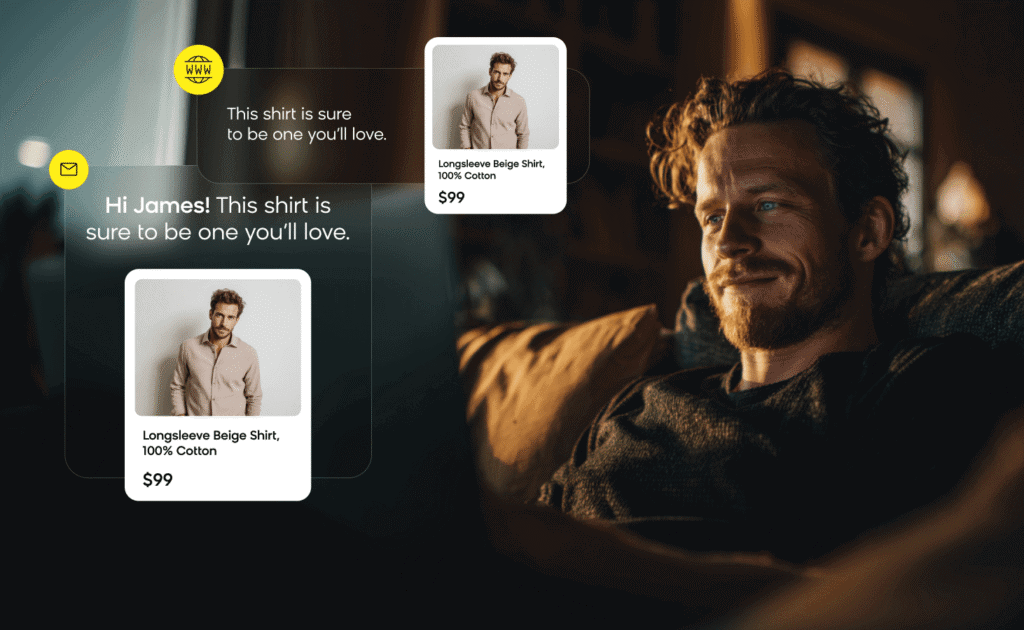
This transformation enables true personalization at scale while leveraging AI in omnichannel marketing to create experiences that feel genuinely personal to each individual customer.
The Core Challenge: Why Traditional Email Platforms Fall Short
Most email marketing platforms struggle with fundamental limitations that prevent true personalization at enterprise scale. Understanding these barriers helps explain why a new generation of email personalization software has emerged to meet modern consumer expectations.
Limited AI That Focuses on Surface-Level Optimization
Many established platforms rely heavily on segmentation approaches and rule-based logic systems that haven’t evolved with advances in artificial intelligence. Their AI applications often remain focused on tactical elements like subject line optimization or basic product recommendations, missing the bigger picture of customer experience orchestration.
These tools frequently lack the sophisticated decision-making capabilities needed for intelligent orchestration across multiple channels. When your AI can only optimize subject lines, you’re missing opportunities to personalize content depth, timing precision, channel selection, and customer journey orchestration based on real-time behavioral signals.
The result creates a significant opportunity cost: your marketing team spends time on tactical optimization rather than strategic customer experience design, limiting your ability to scale sophisticated personalization efforts.
Email-Only Tunnel Vision Limits Cross-Channel Intelligence
Customer interactions span websites, mobile apps, social media, and offline channels, creating rich behavioral data that should inform every email interaction. Yet traditional email tools often operate in isolation from these critical data sources, preventing your brand from delivering truly cohesive, personalized experiences.
Consider this common scenario that damages customer relationships: A customer browses specific products on your website, adds items to their cart, then receives a generic promotional email about completely unrelated products. This disconnect happens because your email platform doesn’t communicate effectively with your ecommerce data and broader customer intelligence systems.
Modern consumers notice these inconsistencies immediately — and they directly impact trust in your brand’s ability to understand their preferences and needs.
Manual Workflows That Prevent Scaling Personalization
Your marketing teams likely spend excessive time building workflows, creating segments, and coordinating across fragmented technology stacks. These inefficiencies compound exponentially as brands attempt to scale personalization across larger customer databases and more sophisticated journey mapping requirements.
Many platforms provide limited visibility into evolving consumer behavior patterns, relying on static reporting and delayed data processing that prevent marketers from identifying optimization opportunities or responding to changing customer preferences in real time.
The cumulative impact creates a strategic disadvantage: While your team manages technical workflows and manual optimizations, your competitors deploy enterprise marketing automation that operates autonomously and scales intelligently without proportional increases in operational overhead.
Modern email personalization software addresses these core limitations through integrated approaches that combine real-time data processing, intelligent decision-making, and multichannel orchestration capabilities — representing what we call agentic orchestration that transforms marketing efficiency and effectiveness.
Autonomous Personalization: Beyond Basic Automation
The distinction between automation and autonomous personalization represents a fundamental shift that changes everything about how sophisticated brands engage customers. Traditional automation executes instructions based on predetermined rules and triggers, while autonomous personalization learns from customer interactions, optimizes performance continuously, and adapts campaign elements dynamically based on real-time intent signals and predictive intelligence.
Think of traditional automation as a player piano — it follows the sheet music perfectly every time but can’t improvise or adapt to different audiences. Autonomous personalization operates like a skilled jazz musician who reads the room, adapts to the audience’s energy, and creates unique experiences while staying true to your brand’s core message and business objectives.
What Advanced AI Actually Does for Email Personalization
Dynamic audience building and optimization — AI algorithms create and update customer segments automatically based on live behavioral data, eliminating the need for manual segment management or static customer categorization that becomes outdated quickly. The AI identifies patterns and opportunities that human analysis might miss while maintaining segments that reflect current customer behavior rather than historical snapshots.
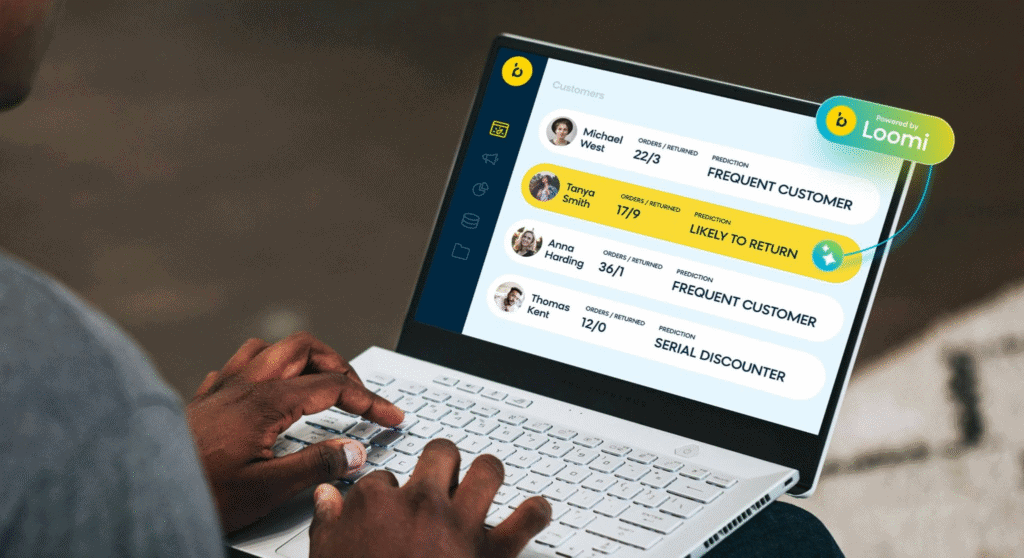
Intelligent content generation and adaptation — Natural language processing technologies enhance message personalization by adapting tone, content recommendations, and call-to-action optimization based on individual customer preferences, engagement history, and predictive modeling of likely responses. This goes far beyond template selection to create genuinely personalized communications at scale.
Predictive optimization across multiple variables — Machine learning models analyze historical performance data and real-time signals to determine optimal send times, preferred communication channels, content formats, and message frequency for each customer automatically, continuously refining these decisions based on ongoing performance feedback.
Cross-channel intelligence and orchestration — Unified customer profiles enable personalized experiences across email, SMS, mobile push notifications, web personalization, search advertising, and social media channels simultaneously, ensuring consistent and complementary messaging that builds rather than competing for customer attention.
The Strategic Human-AI Partnership Model
Effective autonomous personalization maintains human strategic oversight while leveraging AI for execution efficiency and optimization precision. In this partnership model, you define brand voice guidelines, business objectives, strategic constraints, and creative direction. AI systems operate within these carefully designed parameters to optimize customer experiences while maintaining brand safety and strategic alignment.
This collaborative approach enables your marketing teams to focus on creative strategy, customer experience design, and business growth initiatives rather than manual campaign execution and technical workflow management. The result delivers more sophisticated personalization at a greater scale with improved operational efficiency and strategic focus.
Essentially, your role evolves from tactical execution to strategic orchestration — exactly where your expertise adds the most value for long-term business growth. Advanced AI in email marketing enables this autonomous marketing approach while delivering AI and hyper-personalization at enterprise scale.
Advanced vs. Traditional Email Tools: Understanding the Capabilities Gap
The differences between traditional email tools and advanced email personalization software represent fundamentally different philosophies about customer engagement, not just incremental feature improvements. This comparison reveals why organizations are making strategic platform transitions to meet modern consumer expectations.
| Capability | Traditional Email Tools | Advanced Email Personalization Software |
|---|---|---|
| Data Architecture | ESP-based, fragmented data sources with limited integration capabilities | Unified real-time customer data platform with comprehensive product and behavioral data integration |
| Personalization Logic | Rule-based segmentation that requires manual campaign building and management | Adaptive decisioning with self-optimizing algorithms that automatically improve |
| AI Applications | Subject line testing and basic template suggestions | Full content generation, journey orchestration, and predictive optimization across all variables |
| Channel Reach | Email-focused with limited cross-channel coordination | Multi-channel orchestration, including email, mobile, web, search, and advertising integrations |
| Journey Execution | Static workflows with predetermined paths and manual trigger management | Dynamic, autonomous orchestration based on real-time customer behavior and predictive modeling |
| Performance Optimization | Manual A/B testing with delayed results and limited variables | Continuous multivariate optimization with real-time performance improvements |
| Business Outcomes | High volume delivery with limited targeting precision | Context-rich experiences with scalable brand-safe personalization driving revenue growth |
As you can see in this comparison, traditional platforms struggle because they only optimize for email delivery efficiency and basic segmentation capabilities. Meanwhile, advanced email personalization software optimizes for customer experience quality and business outcomes across all touchpoints where customers interact with your brand.
The business impact creates measurable competitive advantages: Companies using advanced platforms report significant improvements in customer lifetime value, retention rates, and revenue per customer — metrics that matter far more than email-specific performance indicators like open rates or click-through rates.
The 5 Essential Pillars of Next-Generation Email Personalization Software
Successful email personalization in 2025 requires a strategic approach. These foundational capabilities separate advanced platforms from traditional email marketing tools and determine long-term success in meeting evolving consumer expectations.
1. Unified Real-Time Data Architecture That Powers Intelligent Decisions
For effective personalization, you need to consolidate identity resolution, behavioral tracking, and product interaction data into a single, actionable customer view. This is something you simply can’t achieve with fragmented data sources.
Here’s what this integration looks like in practice: When a customer browses specific products on your website, abandons their cart, then returns via a social media ad, that complete behavioral sequence should immediately influence their next email content, timing, and channel preference. Advanced platforms create this seamless data flow automatically, eliminating the delays and disconnects that damage customer experiences.
Your unified customer engagement platform should eliminate data silos that limit personalization. When all customer signals flow into a single intelligence system, your AI can make smarter decisions about every interaction while building increasingly accurate customer models over time.
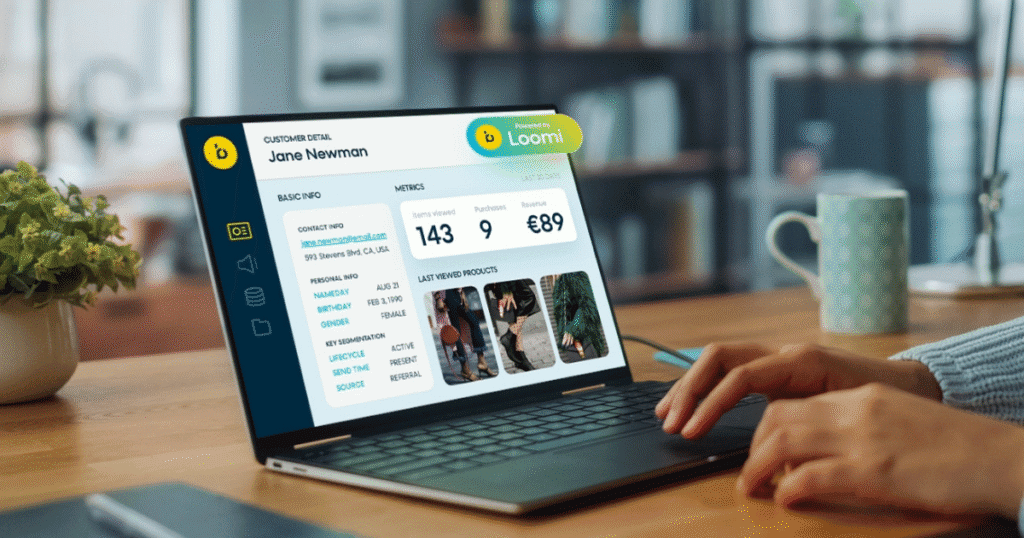
2. AI That Optimizes Strategy, Not Just Tactics
Your AI needs to think strategically about customer relationships rather than simply automating predetermined workflows. Advanced AI should optimize against your defined business objectives while adapting tactics based on performance data, customer lifecycle stages, and behavioral pattern recognition.
Think of the difference between a GPS that follows predetermined routes versus one that adapts to traffic conditions, road closures, and your driving preferences. Strategic AI operates at this higher level of intelligence.
This approach enables continuous improvement of personalization without requiring constant manual intervention from your marketing teams. The AI learns what works for your specific brand, customer base, and business model, then scales those insights across all customer interactions while maintaining brand consistency and strategic focus.
3. Human Strategy Working in Partnership With Machine Execution
Successful personalization balances human creativity and strategic thinking with machine intelligence and execution efficiency. Your marketing teams should maintain complete control over brand voice, messaging strategy, creative direction, and business priorities through intelligent guardrails. This will ensure that all automated content aligns with brand standards and business objectives.
This partnership model enables you to establish the creative parameters, business rules, and strategic constraints. Meanwhile, AI optimizes everything else for maximum engagement and conversion within those boundaries.
This approach represents the evolution toward an autonomous marketing strategy that amplifies human expertise rather than replacing it, creating scalable personalization that maintains the human touch that customers value.
4. True Cross-Channel Integration and Experience Orchestration
Email personalization can’t operate effectively in isolation from other customer experience channels. True personalization requires coordinated experiences across web interfaces, mobile applications, advertising channels, SMS communications, social media interactions, and even offline touchpoints when applicable.
Consider this sophisticated customer journey that advanced platforms orchestrate seamlessly: Someone browses products on your mobile app during their commute, receives a personalized email with those exact items plus complementary products at optimal timing, sees coordinated social media ads that build on the email message, encounters personalized website content when they return, and receives targeted mobile notifications if they show signs of losing interest. Each touchpoint builds intelligently on previous interactions.
Advanced platforms orchestrate consistent, personalized messaging across all channels while adapting content, timing, and channel selection based on individual preferences and cross-channel behavior patterns. This creates compound personalization effects where each interaction improves the relevance and effectiveness of future communications.
5. Business Impact Measurement and Continuous Optimization
Advanced email personalization software measures success through comprehensive business outcomes rather than limiting analysis to email-specific vanity metrics like open rates or click-through rates. Sophisticated measurement focuses on customer lifetime value, retention rates, revenue attribution, cross-channel engagement quality, and long-term brand relationship strength.

This business-focused measurement approach enables your marketing teams to optimize personalization strategies for long-term business growth rather than short-term engagement metrics that may not correlate with actual business success. Advanced platforms provide clear visibility into how personalization investments directly impact revenue, customer retention, and brand loyalty.
Strategic measurement capabilities:
- Multi-touch attribution across all channels and touchpoints
- Customer lifetime value impact tracking and prediction
- Retention and churn prevention measurement
- Brand affinity and engagement quality scoring
- Cross-channel revenue attribution and optimization
Your engagement platform capabilities should provide this level of business-focused measurement and optimization, not just email performance metrics that don’t reflect true business impact.
Proven Results: Advanced Email Personalization Software Success Stories
To illustrate how advanced email personalization software can deliver significant performance improvements, here are some real-world success stories.
Benefit Cosmetics Uses Personalized Emails To Boost Revenue
Makeup brand Benefit Cosmetics was gearing up to launch a new range of products and wanted to ensure that it could reach the right audience with the right message.
To accomplish this, the brand turned to Bloomreach Engagement to create a personalized omnichannel campaign. Benefit Cosmetics segmented its customers into previous buyers, VIPs, and customers who opted in for the waitlist of the new launch.
Then, using Bloomreach’s advanced AI, the brand was able to tailor every touchpoint to each recipient. This resulted in a 50% higher click-through rate on campaign emails, as well as an incredible 40% higher revenue.

Desigual Achieves Global Scale
Desigual needed to scale personalized communications across multiple international markets — all while maintaining brand consistency and operational efficiency. The global fashion brand implemented autonomous personalization to streamline campaign creation while enabling sophisticated localized experiences.
After implementing Bloomreach Engagement, Desigual was able to consolidate all its customer data and marketing channels into one platform, making it easier to target its customers with just a few clicks.
Bloomreach’s AI-powered platform has helped Desigual reduce campaign creation time by 75%, allowing the brand to launch 80 personalized campaigns across 72 countries. What’s more impressive is that this was all managed by a three-person team. And now? The team can further expand to SMS, web, and WhatsApp strategies to achieve global, omnichannel reach.

Vitaminstore Improves Loyalty and AOV With Personalization
Vitaminstore wanted to nurture its customer relationships to foster long-term loyalty. But in order to accomplish this, the brand needed a marketing solution that could unify customer data and orchestrate campaigns with progressive benefits.
That’s why Vitaminstore turned to Bloomreach Engagement. With an intelligent, unified platform, the brand could revamp its loyalty program and target shoppers more effectively based on their spending and buying habits.
This data-driven and personalized approach helped Vitaminestore drive a 33% higher AOV among loyalty members than non-members. Plus, this member engagement improved branded product revenue by an impressive 73%.

Strategic Framework: How to Evaluate Email Personalization Software
Marketing leaders evaluating email personalization software should prioritize platforms that demonstrate advanced capabilities across several critical dimensions that determine long-term success and competitive advantage. Use this comprehensive framework to assess whether platforms can deliver the sophisticated personalization your customers expect and your business requires.
Unified Real-Time Data Processing and Intelligence
The platform must consolidate customer data, behavioral data, product information, and cross-channel interactions in real time to enable intelligent personalization decisions. Fragmented data sources, batch processing delays, or limited integration capabilities will hinder personalization and prevent effective cross-channel coordination.
Here are some questions you should be asking:
- How quickly does customer behavior on our website influence their next email content and timing?
- Can the platform process and act on behavioral signals in real time, or does it rely on batch processing?
- What data sources can integrate automatically, and how complex is the integration process?
Autonomous Orchestration With Strategic Learning
Look for platforms that optimize campaign performance automatically while maintaining marketer control over brand standards, creative direction, and business objectives. Simple automation tools that execute predetermined workflows can’t adapt to changing customer behavior patterns or optimize for evolving business priorities.
Be sure to ask yourself: Does the platform learn and improve from customer interactions while maintaining strategic alignment, or does it simply execute the same rules and workflows repeatedly without strategic optimization?
Comprehensive Cross-Channel Experience Coordination
Evaluate platforms that orchestrate personalized experiences across all your channels (e.g., email, web, mobile, social media, SMS, offline, etc.) rather than limiting personalization capabilities to email communications alone.
Remember: Your customers don’t experience your brand in channel silos, so your technology shouldn’t operate that way either. Integrated experiences drive higher customer lifetime value and brand loyalty.
Dynamic Content Generation and Adaptive Messaging
Advanced platforms can generate personalized messaging, product recommendations, visual elements, and timing optimization based on real-time behavioral inputs, predictive modeling, and strategic objectives rather than relying on static templates or basic merge field personalization.
This capability represents the difference between scalable personalization and manual customization, enabling sophisticated experiences without proportional increases in operational overhead.
Marketing Team Empowerment and Operational Efficiency
The platform should enable your marketing teams to deploy sophisticated personalization campaigns without requiring extensive technical expertise, IT support, or complex workflow management.
Evaluate how quickly your team can launch new campaigns, modify personalization strategies, and respond to market opportunities without technical barriers or extended development cycles.

Enterprise-Scale Performance With Continuous Innovation
Ensure the platform can handle large customer databases, high-volume email delivery, complex personalization logic, and growing data requirements while maintaining consistent performance, reliability, and adaptive learning capabilities as your business scales.
Additional Considerations for Long-Term Success
Advanced email personalization software should integrate seamlessly with your existing marketing technology stack while providing clear migration paths from current email marketing platforms. Evaluate vendor capabilities for data integration, API flexibility, technical support quality, and accommodation of complex organizational requirements.
Additionally, you should consider the long-term scalability of the platform’s personalization capabilities. Can it handle a larger volume of customers without any issues? Are you driving impact in the right metrics? Are there good change management resources in place?
By following this framework, you’ll ensure you’re using the best email personalization tool available to unify your customer data, personalize at scale, and track all your metrics for future optimization.
Start Using AI-Driven Tools for Advanced Personalization
The evolution of email personalization software reflects a broader transformation in customer expectations and competitive dynamics across all industries. The era of manual segmentation, batch processing, and static campaign workflows is rapidly ending as consumers become accustomed to sophisticated personalization from leading digital brands.
The fundamental question is not whether to upgrade email personalization capabilities, but rather how quickly your organization can implement systems that meet modern consumer expectations while positioning your brand for continued competitive success.
To really transform your customer engagement strategy, you need a platform like Bloomreach Engagement. By unifying your customer data in one place, our AI can then deliver advanced personalization that’s specially tailored to each customer’s behaviors, preferences, and needs.
Ready to take your customer experiences to the next level? Learn more about how we put the AI in email.
